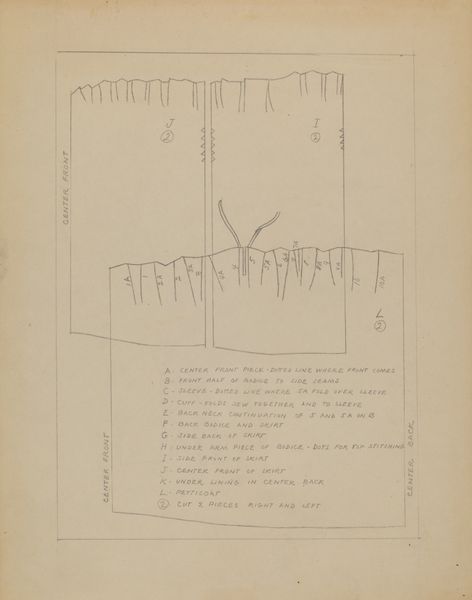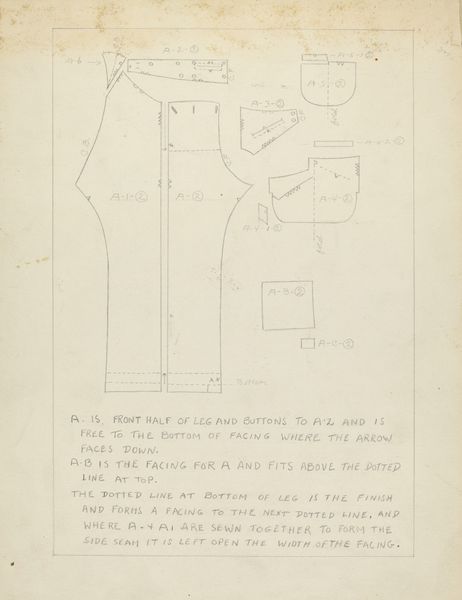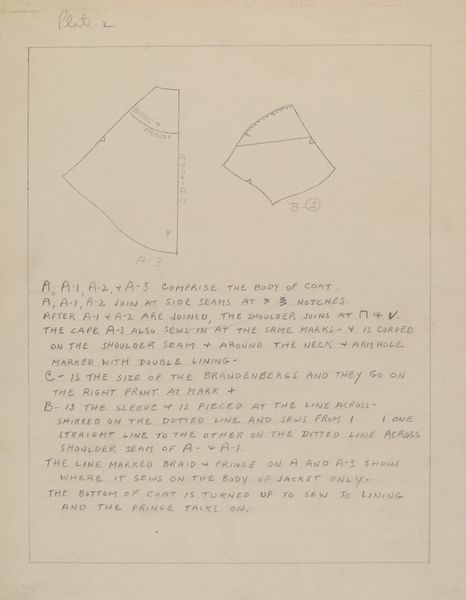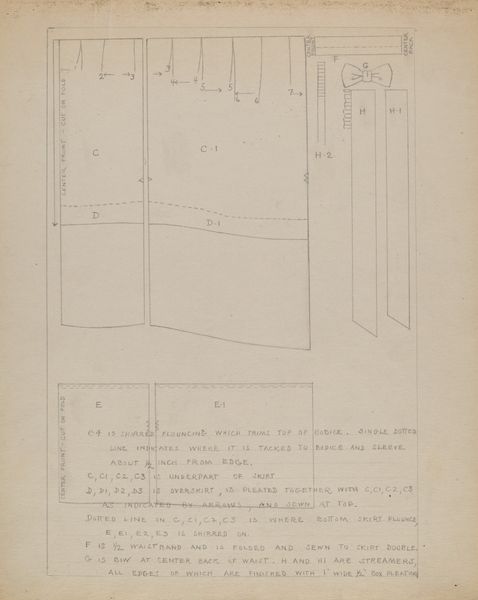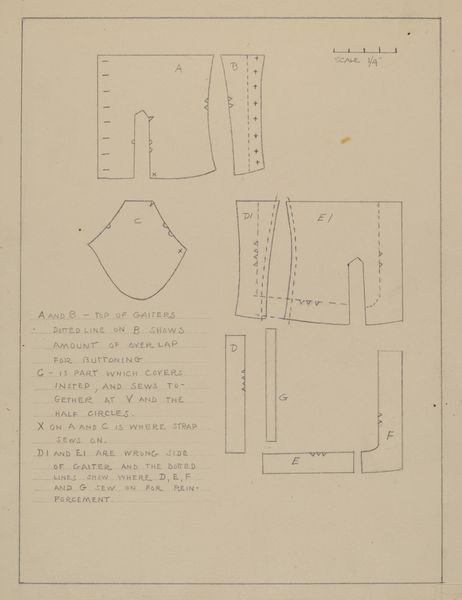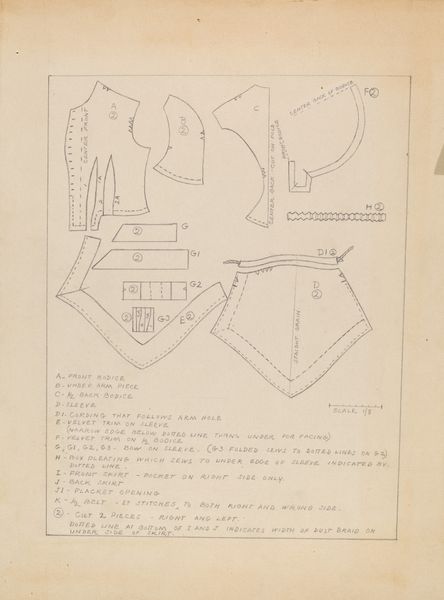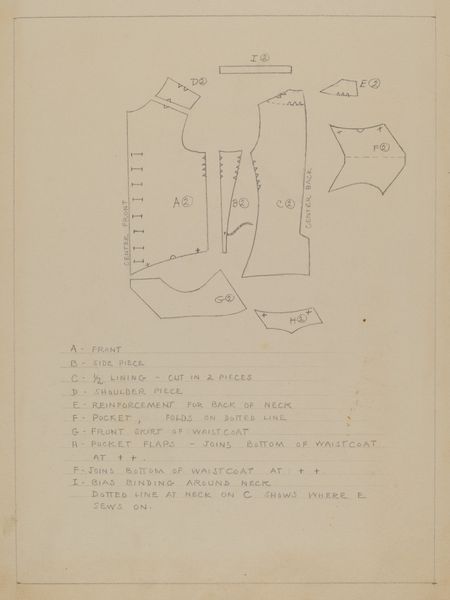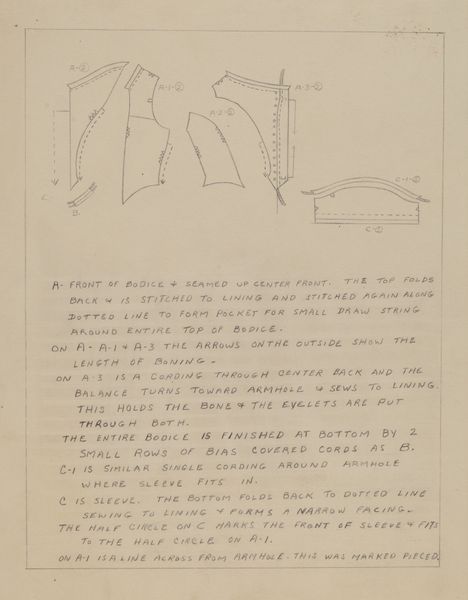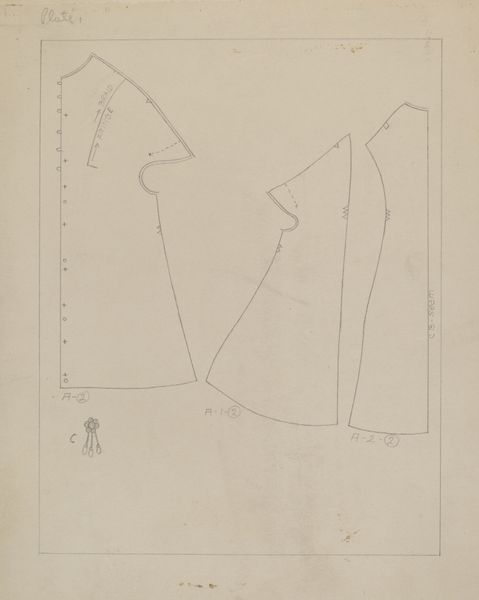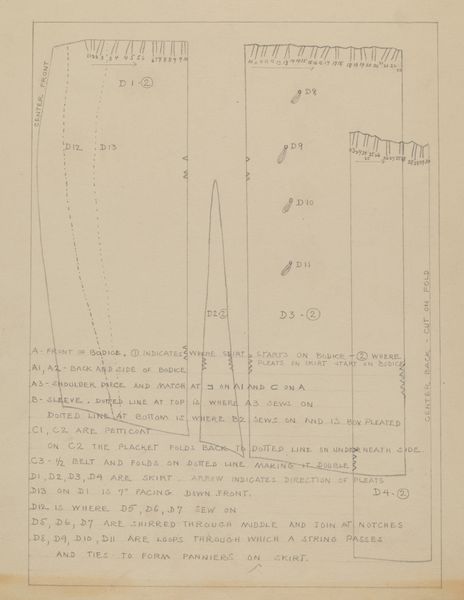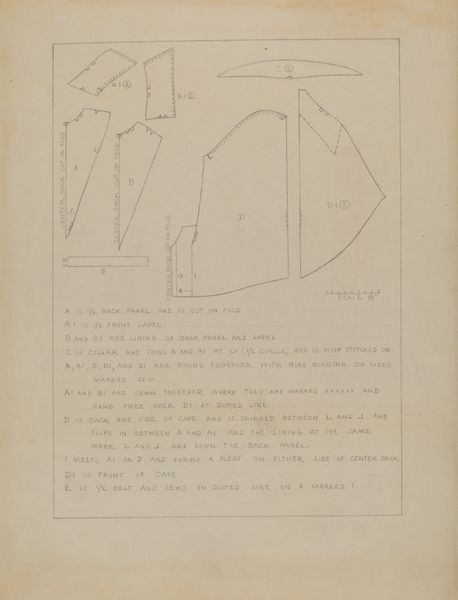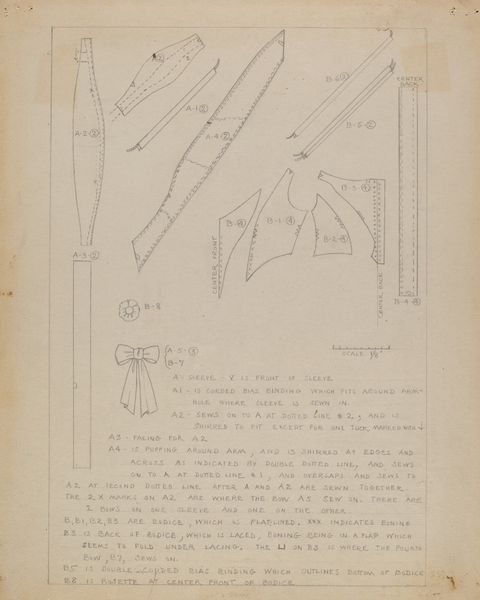
drawing, paper, pencil, graphite
#
drawing
#
paper
#
pencil
#
graphite
#
handwritten
Dimensions: overall: 26.4 x 20 cm (10 3/8 x 7 7/8 in.)
Copyright: National Gallery of Art: CC0 1.0
Curator: So, here we have "Dress (Pattern)" a graphite and pencil on paper drawing by Jean Peszel, around 1936. Editor: Yes, it's striking how this dress pattern drawing, seemingly utilitarian, now hangs on a gallery wall. What stands out to you in this work? Curator: I see a confluence of labor, material, and design. It challenges the traditional hierarchy separating "fine art" from the craft of dressmaking. Look at the inscription; it unveils the process of creation and how the raw material—fabric—is transformed through labor and design into a garment. Editor: Right, it is interesting to read what these small written snippets that denote production. Almost as if we are peering into the material process. Curator: Exactly. It compels us to contemplate the social and economic contexts of the 1930s. Who was the garment intended for? What were the working conditions of those producing similar dresses? Was this drawing a step in bespoke production or geared towards mass consumption? Editor: That's a crucial question. And viewing it as a drawing made from graphite and pencil, rather than a digital rendering, tells us a lot. How different it is from the patterns produced by computers these days. Curator: Absolutely! Think about the labor invested in meticulously sketching the design, lettering the annotations. It makes the process of art integral to its meaning. Editor: This approach has illuminated this simple pattern and made me realize its place in art history and material culture! Curator: I am so glad! Approaching the art from the vantage point of materials, design, and historical labor gives us a perspective on this dress pattern's hidden life.
Comments
No comments
Be the first to comment and join the conversation on the ultimate creative platform.
